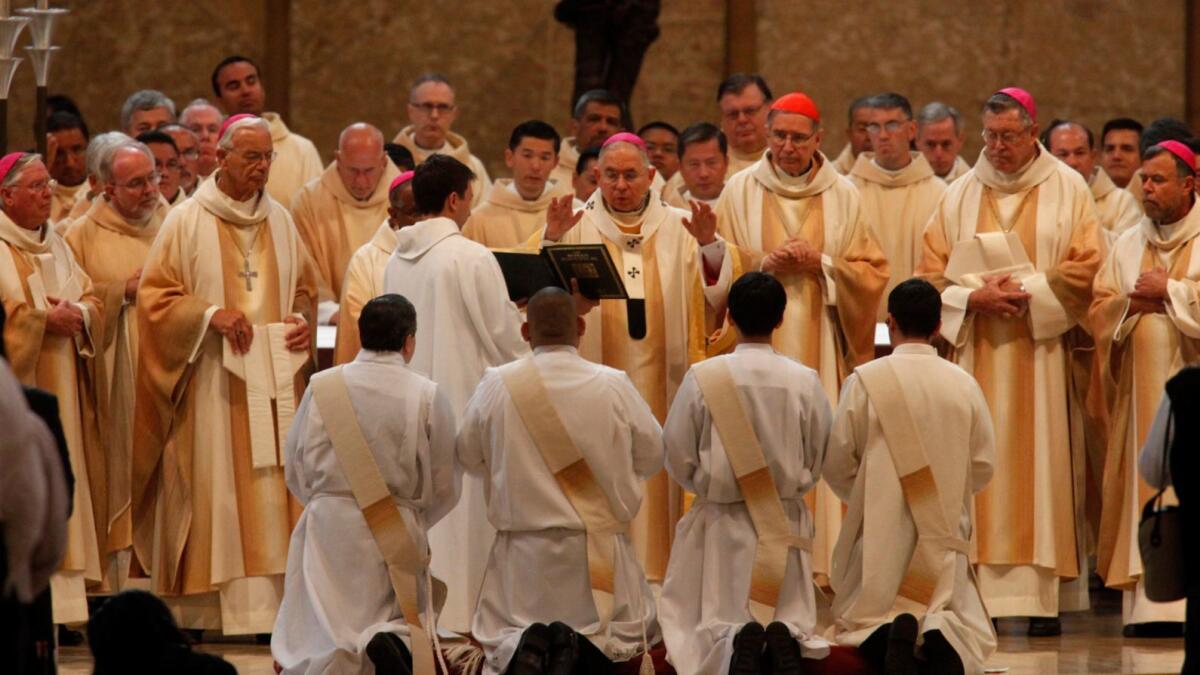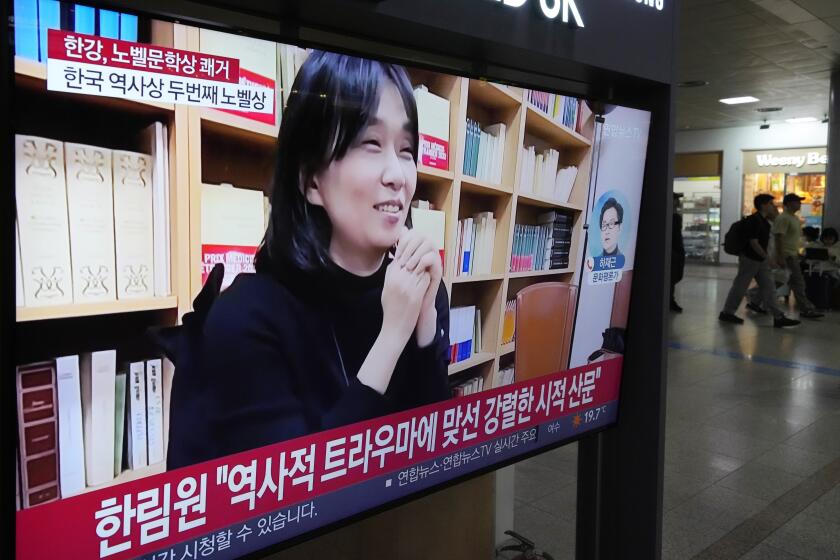Married Catholic priests? There are perhaps 120 in the U.S. already. Here’s how

Experts say as many as 120 Catholic priests in the U.S. are married. (March 13, 2017)
Pope Francis made headlines across the globe when he suggested he was open to the idea of ordaining married men as a way to alleviate priest shortages in remote areas.
Some raised their eyebrows and took note, whereas other Catholics shrugged, pointing out that paths, although they are narrow, already exist for married men to enter priesthood in the Roman Catholic Church.
Experts say as many as 120 Catholic priests in the U.S. are married.
That’s largely because of a policy change made by Pope John Paul II in 1980, which offered a path for married Episcopal priests to continue their ministry after converting to Catholicism.
Under the pastoral provision, Father Paul Sullins, a former Episcopal priest, was ordained in the Catholic Church in 2002 after converting four years earlier.
Each diocese is allowed up to two active married priests, according to the Pastoral Provision Office, which facilitates the Vatican’s policy. The restriction came several years ago after a number of dioceses sponsored four or five candidates, causing concerns that it might appear the discipline of celibacy was being relaxed.
As a married man with three grown children, Sullins said his parishioners at St. Mark the Evangelist Catholic Church in Hyattsville, Md., feel more comfortable coming to him with marital problems. He and his wife sometimes co-counsel couples together.
“If I have some difficulties or struggles in my vocation, I can come home and have a sounding board that’s going to give me honest advice,” he said.

Almost a decade after Sullins converted to Catholicism, the Vatican revised the policy to apply to other denominations with Anglican roots, not only the 2 million-member Episcopal Church.
The Episcopal Church has been rocked in recent years by divisions over doctrine and the role of gays and lesbians in church life.
Some dissatisfied congregations aligned themselves with Anglican bishops overseas, and others sought to leave Anglicanism entirely. In 2012, Pope Benedict XVI established the Personal Ordinariate of the Chair of St. Peter for those groups of Anglicans in the U.S. seeking to enter into full communion with the Catholic Church.
Many married Catholic priests in the U.S. are former Episcopalians, but there is another path for married men to work as priests in the Catholic Church.
Eastern Catholic Churches have allowed the ordination of married men as priests for centuries. In 2014, Francis quietly lifted a 114-year-old ban on married Eastern Catholic priests serving outside their rite’s home country, opening the door for them to serve in the U.S., according to Sullins’ book “Keeping the Vow: The Untold Story of Married Catholic Priests.”
The pope’s recent remarks came during an interview published Thursday with a German newspaper, Die Zeit, when Francis was asked about creating incentives to attract young men to the church.
“Optional celibacy is not a solution,” Francis said, ruling out a suggestion to allow ordained men to get married.
The interviewer then asked: “What about the viri probati, those ‘tried and tested men’ who are married but can be ordained to deacons because of their exemplary life according to Catholic standards?”
“We have to think about whether viri probati are a possibility,” Francis replied. “Then we must also determine what tasks they can take, for example, in remote communities.”
The Latin phrase “viri probati” refers to proven men of exemplary faith. Often middle-aged, they are usually married, but sometimes widowed or celibate, according Father Allan Deck, a Catholic priest and Loyola Marymount University professor.
“In the majority of cases, when you use the term viri probati, you’re referring to good married men, men that have families,” he said.
According to Vatican figures, between 1964 and 2004, 69,063 men left the priesthood worldwide, Sullins wrote. Thousands resigned because they wanted to marry.
But some came to regret their decisions, and 11,213 were allowed to return to priestly service. That included widows or men who had their marriages annulled, Sullins said.
The number of Catholic priests in the U.S. has dropped by more than 30% since 1965, when there were 58,632 priests, according to the Center for Applied Research in the Apostolate. In 2016, there were 37,192.
But Latin America has the worst priest shortage. In Brazil, which has the world’s largest Catholic population, there were more than 10,000 Catholics per priest last year, Sullins said. In the U.S., there were more than 1,800 Catholics for every priest, he added.
Sullins has a different interpretation of the pope’s remarks to the German newspaper. He believes the pope was indicating that one solution to the priest shortage would lie in Canon 517 that allows deacons, who can get married, to oversee parishes when there is a lack of priests.
But others said Pope Francis signaled a willingness to consider ordaining married men in 2014, when he met with Erwin Krautler, the bishop of Xingu in the Brazilian rain forest. Krautler complained that in his diocese, which counted 700,000 faithful, he had only 27 priests.
“He wouldn’t do it unilaterally,” Deck said of the pope’s consideration of ordaining married men. “But he wanted bishops to come together and discuss it.”
Having married men in the ranks of Catholic priests presents advantages, as well as drawbacks, Sullins said.
Married priests, Sullins said, are less mobile than celibate ones and therefore more difficult to reassign. Sullins said priests are reassigned every five to seven years on average.
“Reassigning a married priest is harder,” he said, noting that they may have children in school or own their homes. His children range in age from 19 to 37. “We are more deeply embedded in our community – it would be harder for us to get up and move.”
Sullins, who has served as associate pastor at the same church since his ordination, has seen four senior pastors rotate through his parish.
But Sullins also notes that having a partner in life provides extra guidance and encouragement for a clergyman to do his best.
If he gets a phone call in the middle of the night, he said, his wife would encourage him to get up and go, whereas a celibate priest may be tempted to roll over and go back to sleep.
“All of us have married women who knew they were going to marry a man who was going to be a minster,” he said. “A married man gets an elbow in the side, ‘Hey, hon, you’re a priest. Get up and do your duty.’ Our wives actually encourage us to be better priests than we would otherwise.”
To read the article in Spanish, click here
Follow me on Twitter @AleneTchek
ALSO
Fearful parents sign papers for friends to care for kids in case they’re deported
Seeing red: Membership triples for the Democratic Socialists of America
Utah on the verge of the toughest drunk-driving standard in the U.S. – .05%
More to Read
Sign up for Essential California
The most important California stories and recommendations in your inbox every morning.
You may occasionally receive promotional content from the Los Angeles Times.











